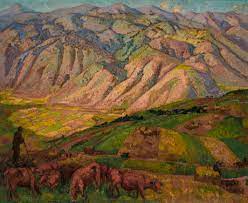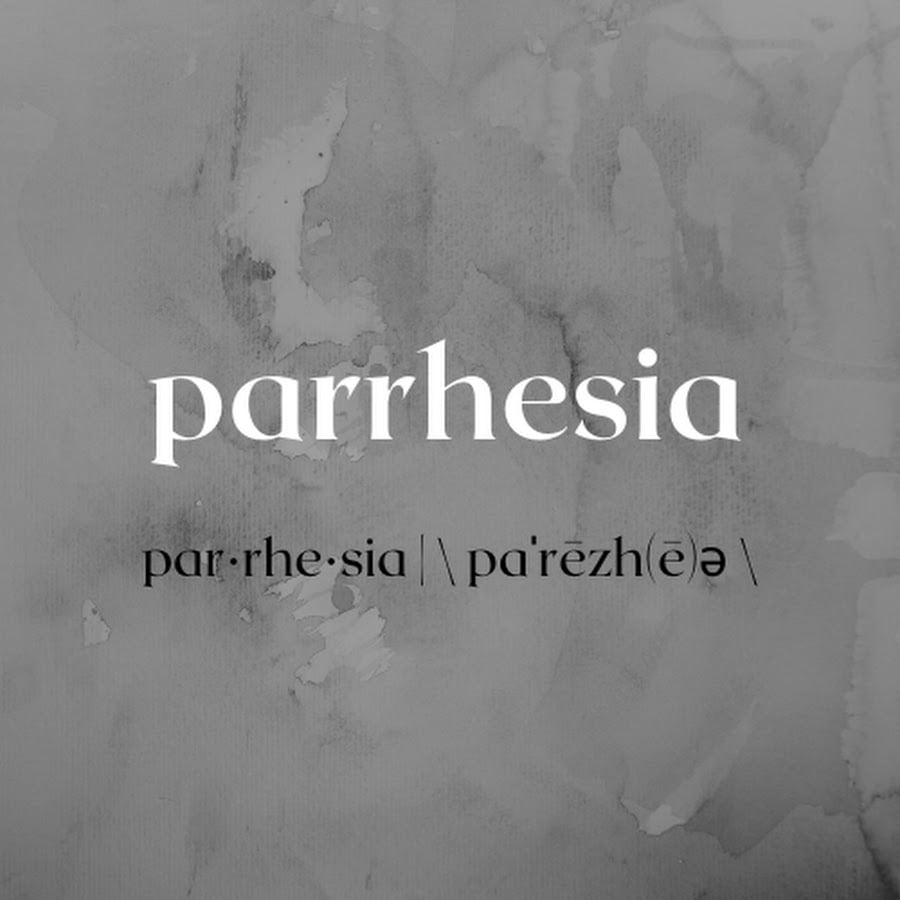Climate-Fiction and Ecocriticism in Armenian Kavar Literature: Hamasdegh and Dapan Markar


Like anyone who once studied at an Armenian school, Kavar Literature writer Hamasdegh has been a name whom I knew through Tankaran, but never explored any further. I have only realized this during the monthly reading club we organize as Parrhesia Collective and I would like to tell you about this experience.
First through Kegham Sevan’s script, I remember reading how Hampartsum Gelenyan, born in 1895 in the village of Perchench in Kharpert, took his pseudonym Hamasdegh. And additionally, I recall having read about his childhood and teaching years surrounded by the pictorial nature, churches and people of the village, his departure in 1913 to join his father who had gone to work in America a year before him, and his continuing education and writing process there. Eventually, I took my first step into the literary world of Hamasdegh with "Dapan Markar"
In its simplest form, "Dapan Markar" is a short story in which the narrator describes the kavar and the character of Dapan Markar based on his childhood impressions. Before we meet Dapan Markar, the main character of the story, we meet the scarecrows that guard the fields of the village. These scarecrows are not lifeless though, the narrator attributed life to each of these scarecrows that he pictured in his mind when he was 7-8 years old. Immediately after the introduction of the scarecrows, who are a little drunk, a little unable to walk, created not by God, but by the people of kavar - he calls the farmer who made the scarecrows an "artist" - and one of whom he believes that he actually saw walking, we meet Dapan Markar. With this meeting, we realize that the scarecrow that the child thinks walking in his mind is actually Dapan Markar himself, and Dapan Markar’s portrayal hardly differs from these scarecrows. Dapan Markar is a detached character from everyone else, everything he cares about in his life belongs only to nature. The cows and cattles he feeds, the air, water, meadows of the village are all related to his work and are vital. He does not need to think about anything or anyone else. Contrary to the belief of his wife Tamar, one of the stereotypically portrayed women in the story, who is seeking all kinds of solutions for her wretched husband's disinterest in her, and even visiting a fortune teller in this stereotypical narrative; "Dapan Markar's heart beats not for women, but for his buffaloes, his fields, his wheat, the fields he would irrigate, these were the things he cared about." (p.10) When his attitude towards nature and his work turns into a kind of detachment, Dapan Markar becomes identified with the scarecrows and gains a temporality of his own in a collective life in nature.
 Gabriel Gyurcyan ծաղկաձորի բնանկար
Gabriel Gyurcyan ծաղկաձորի բնանկար It is possible to interpret this in the seasonal cycle that continues throughout the story, because the beginning and ending of each of Dapan Markar's work, whether it is with his field or with the animals he feeds, takes place within the framework of the seasonal cycle. Along with this seasonal cycle, his character also transforms throughout the story, gradually integrating with nature and turning into a scarecrow. This transformation is completed with a flash of lightning. With a sudden reaction of nature, just before the flash of lightning, the sky becomes cloudy. People run to their homes in the rush of the storm that breaks out and lasts for about half an hour, the animals roaming in the meadows run in all directions, the trees are scattered from one side to the other, which are visualized in the minds, if not with a brush, with words. As all the visual and moving narrative ends with the calming of the storm, we find Dapan Markar injured; he has fallen down beside his animals with the lightning. In this nature where the scarecrows come alive, Dapan Markar is becoming lifeless. Nevertheless, when he is brought home, he is already in a hurry for tomorrow's work and of course the animals he feeds. At the end of the story, it is nature that judges Dapan Markar, whose life is all about nature.
Today, we understand kavar in the most general terms as the rural life of Armenians, and of course we look at the reflections of nature in rural life, with which our ties have weakened today, and the relatively peaceful lives of the kavar people a century ago from a nostalgic perspective. However, Dapan Markar and other stories show that the only aim of the writers of kavar was not to idealize it. Expressing longing in literature does not necessarily mean idealization. In the case of Dapan Markar, we can see that Kavar Literature deals with the relationship between nature and human beings in a cultural context at a time when there is no debate on climate and ecology. Hamasdegh attributes all the sensitivity of his main character to nature. Kavar people are afraid of nature's wrath. In another story, we see that the people of Kavar are bound to rain in order to get the harvest of that year. The balance between human and nature that Hamasdegh points out within the kavar culture seems like a very early production of the eco-critical approach and climate-fiction in today's world literature. However, let alone in world literature, Kavar Literature is neither well known in Armenian literature nor in Turkish literature, although translations are available. However, while reading Hamasdegh, we are exposed to more than a nostalgic village life. If you would like to explore different reflections on kavar, you can join the Kavar Literature reading that we will hold online on June 26th at 21:00.
Source:Համաստեղ, Հատընտիր Պատմուածքներ. Համազգայինի «Վահէ Սէթեան» Տպարան, Պեյրութ-Երեւան 2008



